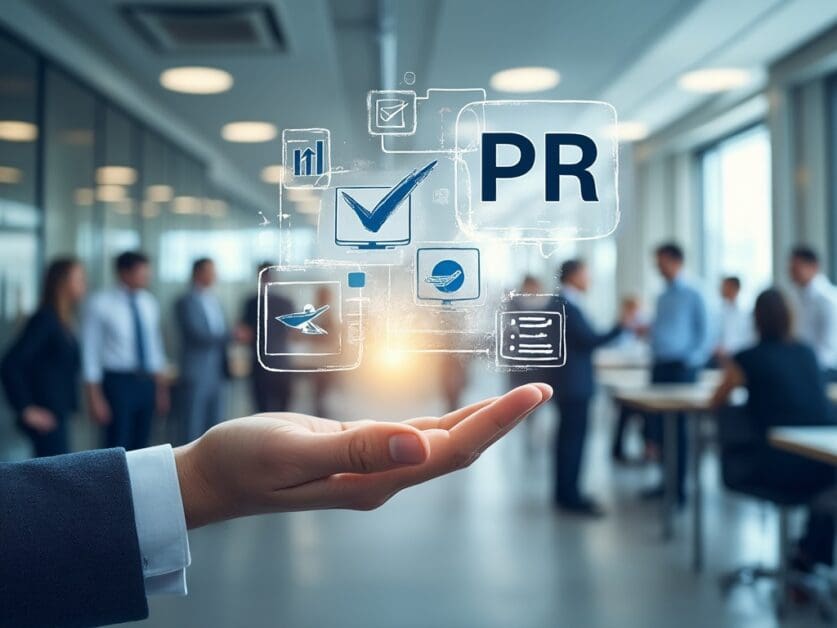What is the Best Approach to Combine Proactive and Reactive PR in Legal Marketing?
In the dynamic world of legal marketing, combining proactive and reactive PR strategies is essential for law firms to maintain a strong public image and effectively manage their reputation. The best approach to integrating these two PR methodologies involves a careful balance of planned initiatives and swift responses to emerging situations. By mastering this dual approach, law firms can enhance their visibility, establish thought leadership, and navigate potential crises with agility and precision.
Proactive PR in legal marketing involves strategically planning and executing initiatives to build a positive public image and establish the firm’s expertise in specific practice areas. This approach allows law firms to control their narrative and consistently reinforce their brand message. On the other hand, reactive PR focuses on responding to external events, news, or crises that may impact the firm’s reputation or present opportunities for commentary. The key to success lies in seamlessly integrating these two approaches to create a comprehensive PR strategy that addresses both long-term goals and immediate needs.
One of the primary benefits of a well-executed proactive PR strategy is the ability to position a law firm as a thought leader in its field. This can be achieved through various tactics, such as publishing whitepapers, hosting webinars, or contributing expert opinions to industry publications. For example, a firm specializing in intellectual property law might proactively develop a series of articles on emerging trends in patent law, showcasing their expertise and foresight in the field. By consistently producing high-quality content, the firm can build credibility and attract potential clients seeking knowledgeable legal counsel.
However, proactive PR alone is not sufficient in today’s fast-paced media environment. Law firms must also be prepared to react swiftly to breaking news, legal developments, or potential crises that may affect their clients or practice areas. This is where reactive PR comes into play. A well-prepared reactive PR strategy enables firms to provide timely commentary on relevant issues, demonstrating their expertise and staying relevant in the public eye. For instance, if a major court decision is announced that impacts a firm’s practice area, having a reactive PR plan in place allows the firm to quickly issue a statement or offer expert analysis to the media.
The best approach to combining proactive and reactive PR in legal marketing involves creating a flexible framework that allows for both planned initiatives and rapid responses. This framework should include:
- A content calendar for proactive PR efforts, outlining planned publications, events, and media outreach.
- A crisis communication plan that outlines procedures for responding to various scenarios.
- A dedicated team or point person responsible for monitoring news and identifying opportunities for reactive PR.
- Pre-approved messaging on key topics that can be quickly adapted for reactive PR needs.
- Established relationships with media contacts to facilitate both proactive pitches and reactive commentary.
By implementing this framework, law firms can ensure they are consistently building their brand through proactive efforts while remaining agile enough to capitalize on reactive opportunities as they arise.
One effective strategy for blending proactive and reactive PR is to use current events or trending topics as a springboard for planned content. This approach, sometimes referred to as “newsjacking,” allows firms to leverage the attention surrounding a particular issue while still maintaining control over their message. For example, if there’s growing public concern about data privacy, a law firm specializing in cybersecurity could proactively develop a series of blog posts or webinars addressing the legal implications of data breaches. This content can then be quickly adapted and deployed as reactive PR if a high-profile data breach occurs, positioning the firm as a go-to expert on the topic.
Another crucial aspect of combining proactive and reactive PR is maintaining consistency in messaging across both approaches. While reactive PR often requires quick thinking and rapid response, it’s essential that these communications align with the firm’s overall brand identity and key messages established through proactive efforts. This consistency helps reinforce the firm’s expertise and values, even in high-pressure situations.
To achieve this consistency, law firms should develop a comprehensive brand messaging guide that outlines key talking points, tone of voice, and core values. This guide can serve as a reference for both proactive content creation and reactive responses, ensuring that all communications, whether planned or spontaneous, reflect the firm’s brand identity.
In the digital age, social media plays a crucial role in both proactive and reactive PR for law firms. Platforms like LinkedIn, Twitter, and even TikTok offer opportunities for firms to share thought leadership content, engage with their audience, and respond quickly to breaking news or industry developments. A well-crafted social media strategy should include both proactive content planning and guidelines for real-time engagement and crisis management.
For proactive PR on social media, law firms can schedule regular posts showcasing their expertise, highlighting firm achievements, or sharing insights on legal trends. This consistent presence helps build brand awareness and establishes the firm as an active participant in industry conversations. However, it’s equally important to leave room in the social media strategy for reactive content. This might include sharing quick takes on breaking legal news, participating in relevant hashtag conversations, or addressing client concerns in real-time.
One innovative approach to combining proactive and reactive PR on social media is the use of “planned spontaneity.” This involves identifying potential trending topics or recurring industry events and preparing content in advance that can be quickly customized and deployed when the opportunity arises. For example, a law firm might prepare template graphics or video snippets discussing various potential outcomes of a high-profile Supreme Court case. When the decision is announced, the firm can quickly customize and post the relevant pre-prepared content, appearing to be among the first to react while actually leveraging proactive planning.
The role of data analytics in shaping both proactive and reactive PR strategies cannot be overstated. By analyzing metrics such as website traffic, social media engagement, and media mention sentiment, law firms can gain valuable insights into which topics and types of content resonate most with their target audience. This data can inform proactive content planning, helping firms focus their efforts on areas that generate the most interest and engagement.
For reactive PR, data analytics can help firms identify emerging trends or potential issues before they become full-blown crises. By monitoring social media sentiment and industry news aggregators, firms can spot early warning signs of developing stories that may require a response. This early detection allows for a more measured and strategic reactive approach, rather than a purely defensive one.
Incorporating search engine optimization (SEO) into both proactive and reactive PR efforts is another key strategy for law firms looking to maximize their online visibility. For proactive PR, this involves researching and targeting relevant keywords in content creation, optimizing website structure, and building high-quality backlinks through media placements and guest posting. In reactive PR scenarios, firms can leverage trending keywords related to breaking news or emerging legal issues to ensure their commentary appears in relevant search results.
One effective tactic for combining SEO with proactive and reactive PR is the creation of “evergreen” content that can be quickly updated and re-promoted in response to current events. For example, a law firm might maintain a comprehensive guide to employment law on their website, which can be regularly updated with new information. When a significant change in employment law occurs, the firm can quickly update the relevant section of the guide and promote it through various channels, capitalizing on both the evergreen nature of the content and the timeliness of the update.
The integration of video content into legal PR strategies offers another powerful way to combine proactive and reactive approaches. Video has become increasingly important in digital marketing, with platforms like YouTube and TikTok offering new avenues for law firms to reach their audience. For proactive PR, firms can develop a series of educational videos explaining complex legal concepts or offering practical legal tips. These videos can be produced in advance and released according to a content calendar.
For reactive PR, live streaming or quickly produced video commentary can be incredibly effective in responding to breaking news or legal developments. Law firms can leverage platforms like Instagram Live or LinkedIn Live to offer real-time analysis of major court decisions or new legislation. This approach combines the immediacy of reactive PR with the engaging format of video content, helping firms stand out in a crowded media landscape.
Another important aspect of combining proactive and reactive PR in legal marketing is the development of strong media relationships. While proactive PR often involves pitching stories or offering expert commentary to journalists, these relationships become invaluable during reactive PR situations. Cultivating relationships with key reporters and editors in relevant beats (e.g., legal affairs, business, technology) through regular interactions and providing valuable insights can position a law firm as a go-to source when breaking news occurs.
To effectively manage these relationships, law firms should maintain a comprehensive media database that includes contact information, areas of interest, and past interactions with each journalist. This database can be used for both proactive outreach and quick identification of relevant contacts during reactive PR situations. Additionally, firms should consider offering media training to their attorneys, preparing them to effectively communicate key messages in both planned interviews and impromptu reactive scenarios.
The rise of artificial intelligence (AI) and machine learning technologies presents both challenges and opportunities for legal PR strategies. On the proactive side, AI can be used to analyze vast amounts of data to identify trending legal topics, inform content creation, and even assist in drafting press releases or social media posts. For reactive PR, AI-powered monitoring tools can provide real-time alerts on emerging issues or mentions of the firm, allowing for faster response times.
However, the use of AI in legal marketing also raises ethical considerations that firms must navigate. For example, the use of AI-generated content must be carefully managed to ensure accuracy and compliance with legal advertising regulations. Additionally, firms must be prepared to respond to potential controversies surrounding the use of AI in legal practice, which may require a combination of proactive education efforts and reactive crisis management.
The concept of thought leadership plays a crucial role in both proactive and reactive PR for law firms. Proactively, firms can establish thought leadership through regular publication of insightful articles, speaking engagements at industry conferences, and participation in legal panels or roundtables. This ongoing demonstration of expertise positions the firm and its attorneys as authoritative voices in their practice areas.
In reactive PR scenarios, established thought leadership can be leveraged to provide context and depth to the firm’s responses to current events. For example, if a law firm has consistently published content on cybersecurity law, they are more likely to be sought out by media for comment when a major data breach occurs. The firm can then reactively offer insights that are bolstered by their proactive thought leadership efforts.
To effectively combine thought leadership with reactive PR, firms should maintain a “rapid response team” of attorneys who are prepared to quickly provide expert commentary on breaking news in their practice areas. This team should be supported by PR professionals who can help craft messaging and facilitate media connections. By having this structure in place, firms can rapidly capitalize on news events that align with their areas of expertise.
The integration of community engagement and corporate social responsibility (CSR) initiatives into a law firm’s PR strategy offers another avenue for combining proactive and reactive approaches. Proactively, firms can plan and execute CSR programs that align with their values and practice areas, such as pro bono work, environmental initiatives, or diversity and inclusion efforts. These ongoing programs can be regularly promoted through various PR channels, showcasing the firm’s commitment to social responsibility.
From a reactive PR perspective, having established CSR initiatives provides firms with a positive foundation from which to respond to potential crises or negative publicity. For example, if a firm faces criticism over a controversial case, they can point to their ongoing community engagement efforts as evidence of their broader commitment to social good. Additionally, firms can reactively amplify their CSR efforts in response to current events or social movements, demonstrating their ability to adapt and respond to societal needs.
The role of internal communication in supporting both proactive and reactive PR efforts should not be overlooked. Effective internal communication ensures that all members of the firm, from partners to support staff, are aligned with the firm’s PR strategy and prepared to support both planned initiatives and crisis responses. This might involve regular updates on PR efforts, training sessions on media interaction, and clear protocols for escalating potential issues to the PR team.
In proactive PR scenarios, strong internal communication can help generate ideas for content and identify attorneys who might serve as effective spokespersons for various topics. For reactive PR, a well-informed internal team can help quickly gather necessary information and ensure consistent messaging across all firm representatives.
The integration of public speaking and event participation into a law firm’s PR strategy offers another effective way to blend proactive and reactive approaches. Proactively, firms can seek out speaking opportunities at industry conferences, legal seminars, and community events. These engagements allow attorneys to showcase their expertise, build their personal brand, and network with potential clients and media contacts.
From a reactive PR standpoint, having a roster of attorneys who are experienced public speakers can be invaluable when responding to breaking news or emerging legal issues. These individuals can be quickly deployed to provide commentary at press conferences, participate in media interviews, or speak at hastily organized industry events in response to significant legal developments.
To maximize the impact of public speaking engagements, firms should develop a comprehensive speaker’s bureau that matches attorneys’ expertise with relevant speaking opportunities. This resource can be used both for proactive outreach to event organizers and for quickly identifying the most suitable spokesperson for reactive PR needs.
In conclusion, the best approach to combining proactive and reactive PR in legal marketing involves creating a flexible, integrated strategy that leverages the strengths of both methodologies. By developing a strong foundation of proactive content and thought leadership, cultivating media relationships, and maintaining readiness for rapid response, law firms can effectively manage their public image in both planned and unexpected scenarios. The key lies in maintaining consistency across all communications, leveraging technology and data analytics, and fostering a culture of PR awareness throughout the firm. As the legal industry continues to evolve, those firms that master the art of balancing proactive and reactive PR will be best positioned to thrive in an increasingly competitive and fast-paced media landscape.
Citations:
https://attorneys.media/proactive-pr-vs-reactive-pr-law-firms/
https://mulberrymc.com/blog/proactive-vs-reactive-public-relations
https://attorneys.media/reactive-pr-legal-marketing-attorneys/
https://www.jaffepr.com/blog/understanding-proactive-pr-vs-reactive-pr




















